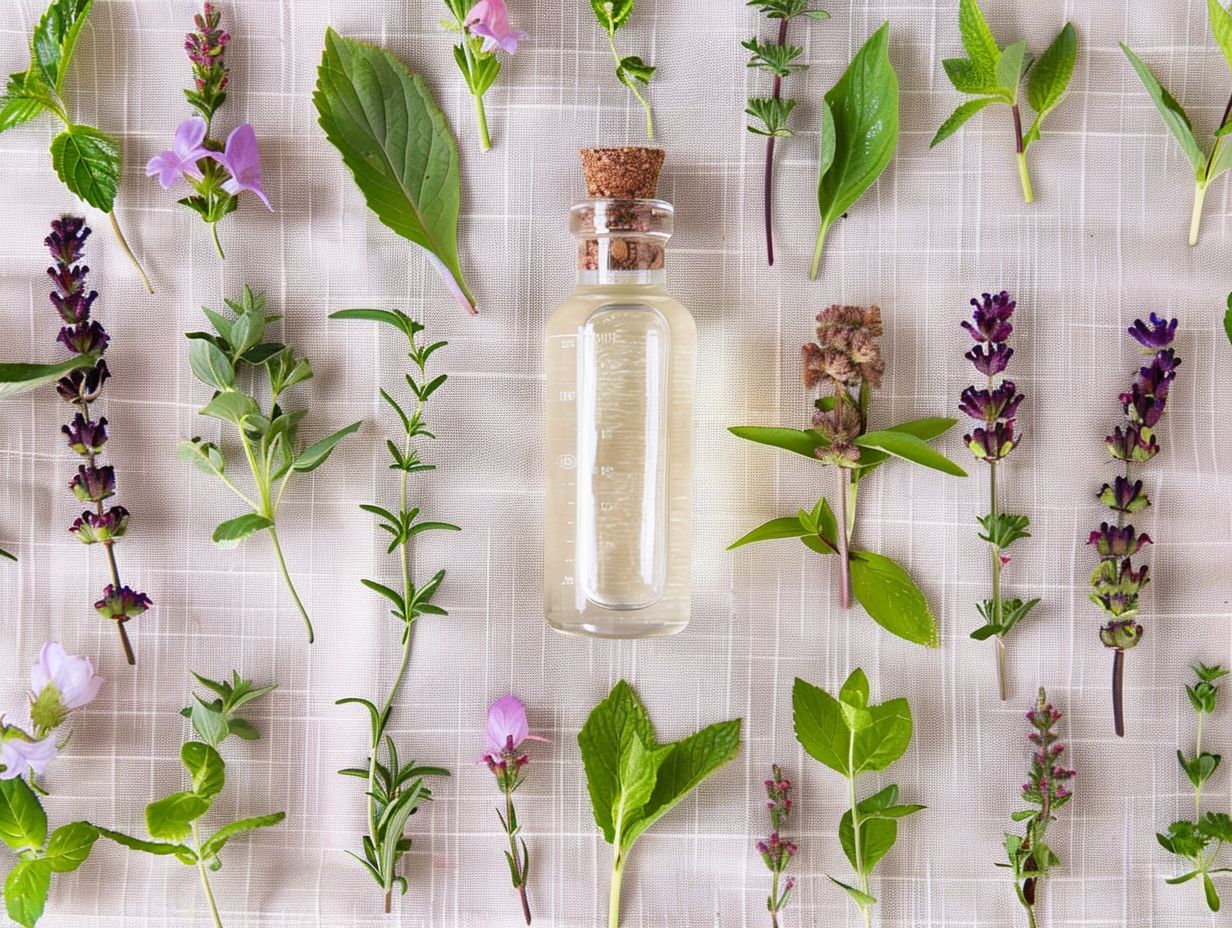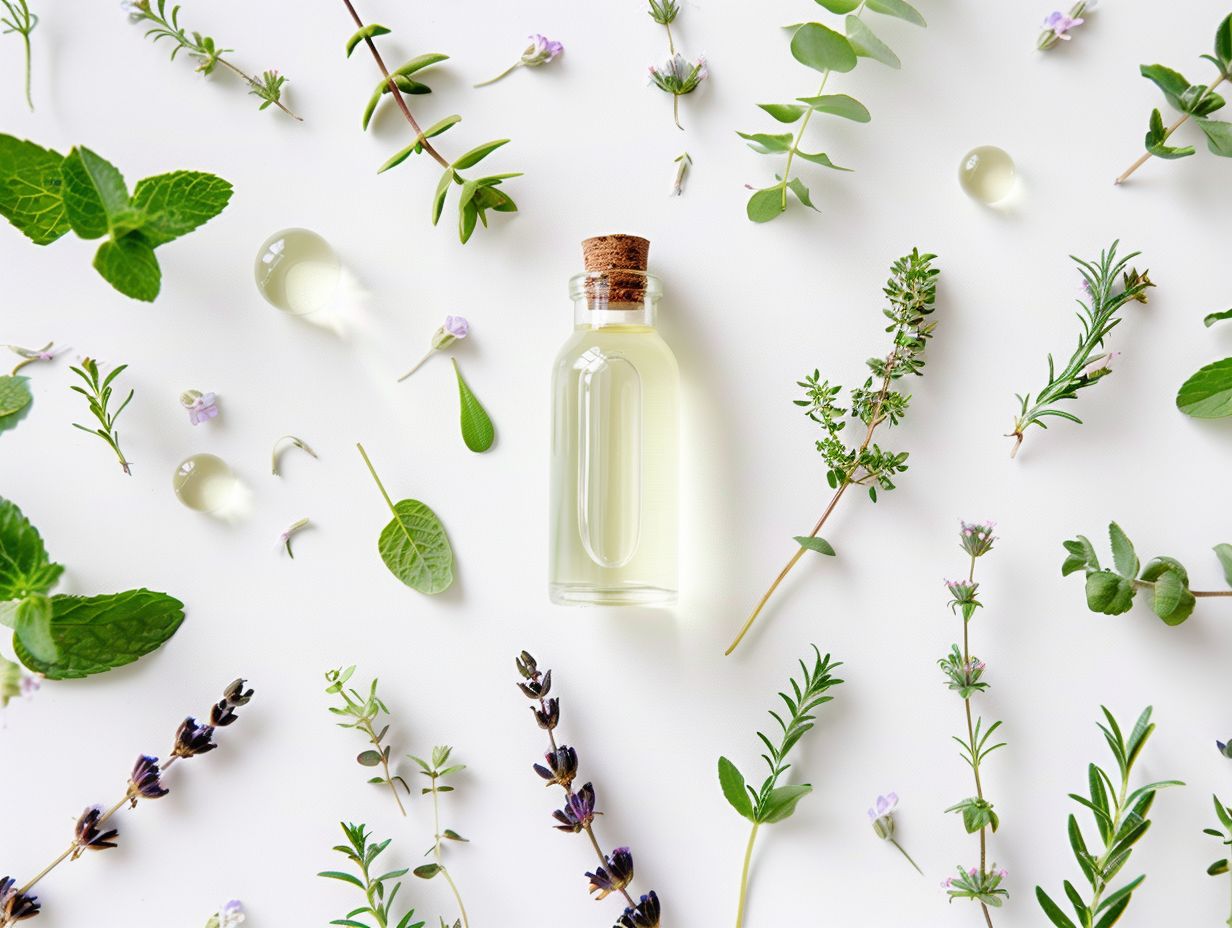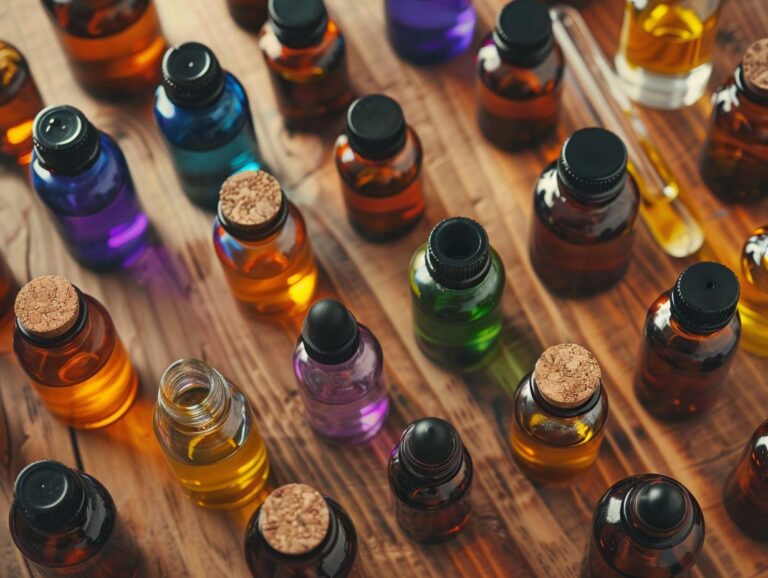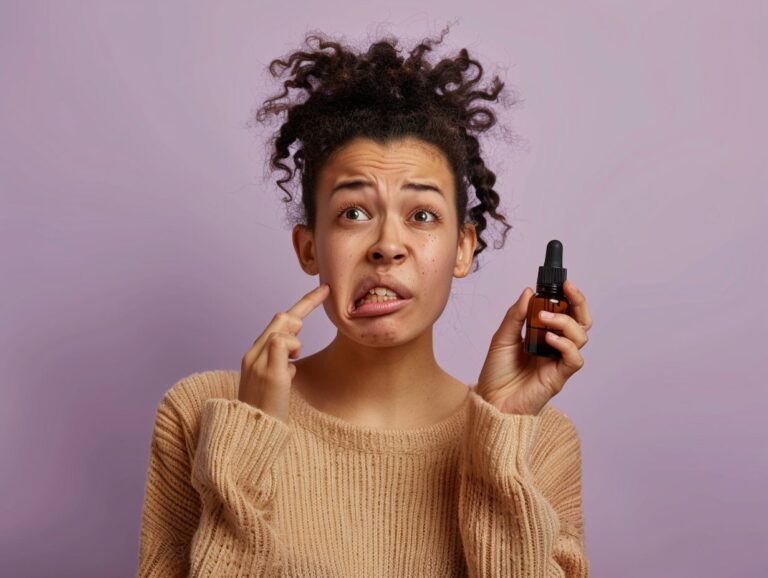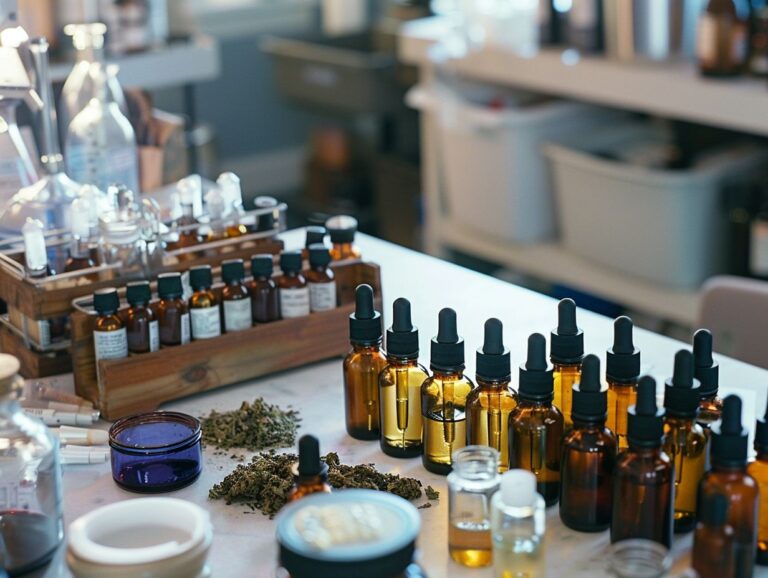How Did Essential Oils Get Its Name
Have you ever wondered about the origins of essential oils and how they got their name?
In this article, we will explore the history of what essential oils mean, from their early uses to the rise of aromatherapy.
We will also delve into the different types of essential oils, how they are extracted, and their various uses in aromatherapy, skincare, home cleaning, and natural remedies.
So, grab a cup of tea and join us on this fragrant journey through the world of essential oils.
Key Takeaways:
What Are Essential Oils?
Essential oils are highly concentrated, aromatic compounds extracted from plants through distillation or mechanical methods. These oils capture the essence of the plant’s fragrance and medicinal properties.
These oils are known for their therapeutic benefits, having been used for centuries in traditional medicine practices across various cultures. The extraction methods for essential oils vary depending on the plant source; popular techniques include steam distillation, cold pressing, and solvent extraction.
The diversity of aromatic compounds found in different plant oils is staggering, with each oil containing a unique combination of compounds such as terpenes, phenols, and aldehydes. These compounds contribute to the distinct scent and healing properties of each essential oil.
History of Essential Oils
The history of essential oils dates back to ancient civilizations that recognized the healing properties of aromatic plants and their extracts. These oils were used for medicinal purposes and in perfumes.
Ancient Egyptians were among the first to document the use of essential oils for medicinal and spiritual purposes, with evidence dating back to around 3000 BC. They utilized oils such as frankincense and myrrh in religious rituals, embalming practices, and for their healing properties.
During the Golden Age of Islam, from the 8th to the 14th century, the Arab world made significant advancements in distillation techniques, allowing for the extraction of essential oils on a larger scale. This period marked a pivotal moment in the history of aromatics.
Early Uses of Essential Oils
Early civilizations utilized essential oils for their analgesic and aromatic properties, extracting them through traditional methods such as steam distillation and solvent extraction.
In many ancient cultures, these essential oils held significant importance beyond their physical benefits. They were often used in religious ceremonies to purify spaces and enhance meditation practices, bringing a sense of calm and tranquility.
The extraction techniques varied across civilizations, with some relying on cold pressing for citrus oils or enfleurage for delicate floral essences.
Ancient Egyptians, for instance, highly valued oils like frankincense and myrrh for their healing properties and as offerings to their gods.
The Rise of Aromatherapy
The modern concept of aromatherapy emerged from the traditional use of essential oils for their medicinal and aromatic properties, leading to their integration into modern alternative medicine practices.
Aromatherapy has gained popularity over the years due to the increasing awareness of natural therapies and their potential health benefits. Essential oils are extracted from plants and carry the concentrated essence of their fragrance and therapeutic properties.
These oils are known to have various biological effects on the body, such as reducing stress, improving sleep quality, and boosting mood. Some essential oils like lavender, peppermint, and tea tree oil are commonly used for their calming, invigorating, and antiseptic properties, respectively.
The integration of aromatherapy into mainstream healthcare systems has been a gradual process, with healthcare providers recognizing its potential as a complementary treatment to conventional medicine. Research continues to explore the efficacy of essential oils in managing conditions such as anxiety, pain, and insomnia.
How Did Essential Oils Get Their Name?
The term ‘essential oils’ originated from the word ‘essence,’ representing the concentrated chemical composition of aromatic compounds found in plant extracts.
This term embodies the fundamental nature of these oils, capturing the essence of their powerful properties and aromatic richness. Historically, essential oils were referred to as ‘quintessential oils,’ emphasizing their quintessential or essential nature. Through the process of distillation or cold pressing, these oils extract the vital essence of plants, encapsulating their therapeutic benefits. Essential oils possess a complex chemical makeup that gives each oil its distinct fragrance and therapeutic properties, making them highly valued in aromatherapy, skincare, and holistic medicine.
Explanation of the Word ‘Essential’
The term ‘essential’ in essential oils refers to the bioactive compounds and chemical constituents that define the unique properties and therapeutic effects of these plant extracts.
These bioactive compounds are responsible for the diverse medicinal uses and biological effects exhibited by essential oils. For example, the compound eugenol found in clove oil has been shown to possess antioxidant, antimicrobial, and anti-inflammatory properties.
Similarly, the presence of limonene in citrus oils contributes to their ability to promote relaxation and reduce stress through aromatherapy.
The chemical composition of essential oils plays a crucial role in determining their efficacy for specific health conditions, making them valuable in various fields such as aromatherapy, skincare, and holistic medicine.
Explanation of the Word ‘Oil’
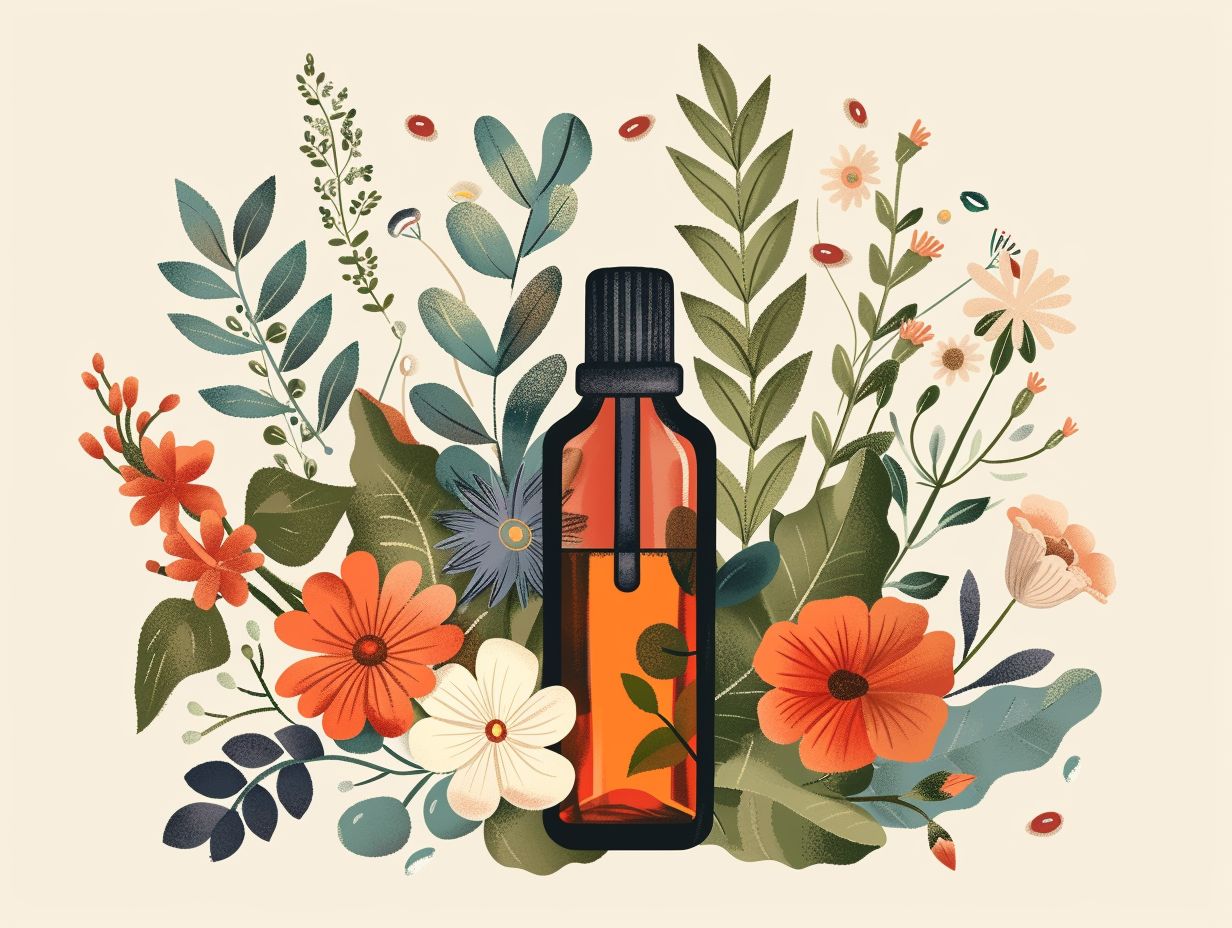
In the context of essential oils, the term ‘oil’ signifies the lipophilic nature of these fragrant substances derived from plant material, containing a complex mixture of volatile constituents.
Essential oils are predominantly composed of volatile components such as terpenes, alcohols, esters, and phenols, which contribute to their characteristic fragrances and therapeutic properties. These aromatic compounds are extracted through various methods like steam distillation, cold pressing, or solvent extraction, depending on the plant source and chemical composition. For example, citrus essential oils like lemon or orange are typically extracted by cold pressing the rinds, while lavender or peppermint oils are obtained through steam distillation of the flowers or leaves.
What Are the Different Types of Essential Oils?
Essential oils are categorized into distilled, expressed, and solvent-extracted types based on the extraction methods used to obtain these aromatic compounds from plants.
Distilled oils, also known as volatile oils, are extracted through the process of distillation, where steam is passed through the plant material to release the essential oils. This method is commonly used for plants with high oil content such as lavender, peppermint, and eucalyptus.
Expressed oils, on the other hand, are obtained by physically pressing the plant material, usually for fruits like citrus peels.
Solvent-extracted oils involve using chemical solvents like hexane to break down the plant material and extract the oils, often used for delicate flowers like jasmine and rose.
Distilled Essential Oils
Distilled essential oils are extracted through the process of steam distillation, where plant material is subjected to steam to release the volatile aromatic compounds.
In the steam distillation process, the plant material is typically placed in a still where steam is generated. The steam penetrates the plant material, causing the essential oils to evaporate along with the steam. The mixture of steam and essential oil vapor is then condensed back into liquid form through a cooling system.
The equipment used in steam distillation includes a boiler to generate steam, a still or distillation apparatus, a condenser to cool and collect the distilled liquid, and a separator to differentiate between the essential oil and water. The role of steam in this process is crucial, as it helps carry the volatile oils away from the plant material.
Various plants yield essential oils through steam distillation, such as lavender, peppermint, eucalyptus, and tea tree. Each plant requires specific conditions and duration of steam exposure to optimize oil extraction.
Expressed Essential Oils
Expressed essential oils, also known as cold-pressed oils, are mechanically extracted from citrus fruits in relatively large quantities to preserve their aroma and therapeutic properties.
The cold-pressing technique involves applying mechanical pressure to the fruit rinds, causing the essential oils to release without the use of heat or chemicals. This gentle extraction method is favored for its ability to capture the full range of aromatic compounds present in the citrus fruits, resulting in oils that are rich in fragrance and beneficial properties.
These expressed oils find wide applications in perfumery due to their intense scent profiles, often serving as top notes that provide a refreshing and invigorating quality to fragrances. The natural composition of cold-pressed oils makes them popular in aromatherapy, as they retain the therapeutic benefits of the original plant material.
Solvent-extracted Essential Oils
Solvent-extracted essential oils are obtained using solvents such as hexane or supercritical carbon dioxide to extract complex compounds, waxes, and resins from plant material.
In the solvent extraction process, the choice of solvent plays a crucial role in the final product’s quality.
- Hexane, a common solvent, efficiently dissolves lipophilic compounds and helps separate them from the plant material.
- On the other hand, supercritical CO2 offers a cleaner and purer extraction method, as it leaves no residue in the oil. This ensures that the solvent-extracted oils maintain their natural properties without any chemical traces, making them highly sought after in the perfume and cosmetic industries.
How Are Essential Oils Extracted?
Essential oils are extracted from plant material using various methods such as steam distillation, cold pressing, and solvent extraction, each technique tailored to the specific properties of the botanical species.
Steam distillation is one of the most common methods, involving the use of steam to gently extract the volatile compounds from the plant material. This process is ideal for delicate flowers or leaves.
In contrast, cold pressing is primarily used for citrus fruits, where the oils are mechanically squeezed out without the use of heat.
Solvent extraction, on the other hand, utilizes chemical solvents like hexane to obtain a broader spectrum of aromatic compounds. Each method has its own advantages and drawbacks, contributing to the diversity of essential oils available in the market.
Steam Distillation
Steam distillation is a common method for extracting essential oils, involving the separation of aromatic compounds from plant material using steam and subsequent analysis via techniques like GC-MS.
Steam distillation plays a crucial role in the extraction process by gently heating the plant material and carrying the volatile aromatic compounds along with the steam. As the steam passes through the plant matter, it helps to break down the cell walls and release the essential oil molecules. This method is preferred for its ability to retain the delicate aromatic components without causing damage. Following extraction, these oils can be analyzed using sophisticated techniques such as Gas Chromatography-Mass Spectrometry (GC-MS) to identify and quantify the chemical composition accurately.
Cold Pressing
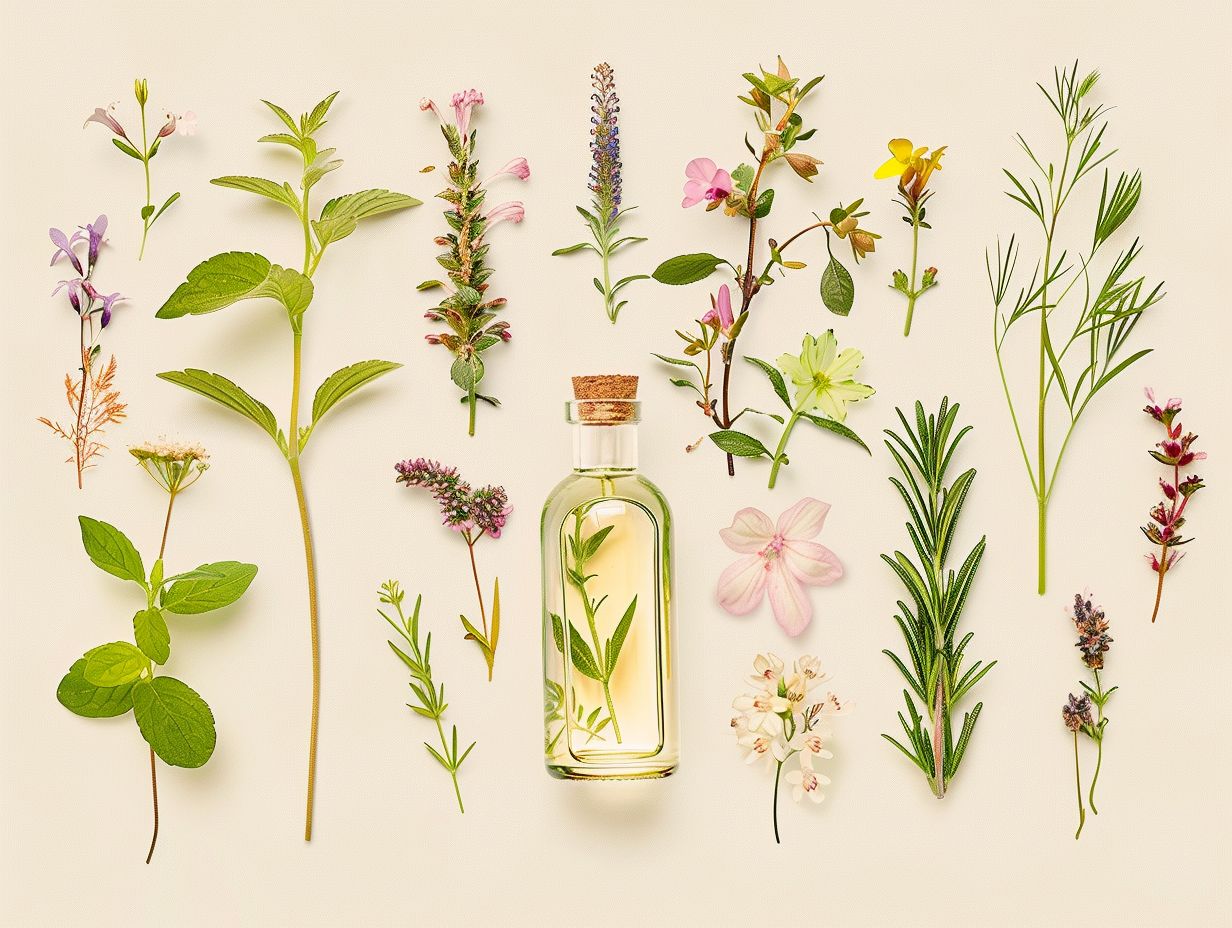
During the cold pressing process, seeds, nuts, or fruits are mechanically pressed at temperatures below 50 degrees Celsius, ensuring that the heat-sensitive compounds in the botanicals remain intact. This gentle extraction method helps retain the essential oils’ natural properties and aroma, making them ideal for various applications in cosmetics, aromatherapy, and culinary uses.
One of the key advantages of cold-pressed oils is their high quality and purity, as the lack of heat in the extraction process helps preserve the oil’s nutritional value and beneficial compounds. Cold-pressed oils are often more affordable compared to oils extracted through other methods, making them a popular choice for both commercial and personal use.
Solvent Extraction
Solvent extraction is utilized to obtain essential oils containing waxes, resins, and lipophilic compounds from plant material using solvents like hexane or liquid carbon dioxide.
This method is widely embraced in the industry due to its efficiency in extracting a broader range of aromatic compounds from various plant sources. By dissolving the plant material in the selected solvent, lipophilic components, waxes, and resins are effectively separated, allowing for a more concentrated and diverse essential oil output.
The use of hexane or liquid carbon dioxide as solvents allows for the selective extraction of different compounds, enabling producers to create complex essential oil blends that capture a richer aromatic profile. The solvent extraction process is highly scalable and can be adapted for large-scale commercial production, making it a preferred choice for many essential oil manufacturers.
What Are the Uses of Essential Oils?
Essential oils find diverse applications in aromatherapy, skincare, home cleaning, and natural remedies due to their therapeutic, aromatic, and antimicrobial properties.
One of the primary uses of essential oils is in aromatherapy, where they are diffused or inhaled to promote relaxation, improve mood, and alleviate stress. These oils interact with the brain’s limbic system, affecting emotions and behaviors.
In skincare, essential oils are prized for their ability to nourish, rejuvenate, and heal skin due to their anti-inflammatory and antioxidant properties.
These oils are commonly incorporated into natural home cleaning products as potent disinfectants, replacing harsh chemicals with environmentally friendly alternatives.
Aromatherapy
Aromatherapy is a practice that utilizes essential oils for their therapeutic and healing effects, promoting relaxation, stress relief, and emotional well-being through aromatic compounds.
These essential oils are extracted from various plants, flowers, and herbs, each containing unique compounds that offer a range of benefits. Lavender oil, for instance, is renowned for its calming properties, ideal for reducing anxiety and improving sleep quality.
On the other hand, peppermint oil is invigorating and can help alleviate headaches and improve focus. The power of essential oils lies in their ability to interact with the body on a physiological and emotional level, offering a natural alternative for holistic healing.
Skincare and Beauty
Essential oils are commonly used in skincare and beauty products for their fragrant and beneficial properties, contributing to natural skincare routines and enhancing the aroma of cosmetic formulations.
These oils are extracted from various plant sources and are renowned for their moisturizing, anti-inflammatory, and rejuvenating properties, making them valuable additions to skincare routines worldwide.
- Essential oils like lavender, tea tree, and rosehip oil are known for their ability to nourish the skin, reduce inflammation, and promote natural healing, catering to a wide range of skincare needs.
These oils find application in the perfume industry, where their captivating scents are used to create luxurious fragrances that elevate the sensory experience of individuals, providing not only skincare benefits but also enhancing one’s overall well-being.
Home Cleaning and Deodorizing
Essential oils are effective natural agents for home cleaning and deodorizing, possessing antimicrobial properties that can disinfect surfaces, eliminate odors, and create a fresh ambiance.
These oils, derived from plants, such as lavender, tea tree, and eucalyptus, offer a green alternative to harsh chemicals typically found in commercial cleaning products. Their versatile nature allows them to be used in various DIY cleaning solutions for kitchens, bathrooms, and laundry. Whether it’s wiping countertops, de-greasing stovetops, or refreshing carpets, essential oils can tackle a myriad of cleaning tasks while emitting pleasant scents.
Natural Remedies
Essential oils derived from medicinal plants are employed in natural remedies to address various health concerns, offering alternative pharmaceutical agents with biological properties and curative effects.
These oils are renowned for their diverse pharmacological uses, such as anti-inflammatory, antimicrobial, and analgesic properties, making them versatile in treating conditions like skin irritations, headaches, and respiratory issues. The therapeutic applications of essential oils extend to mental health, with calming scents like lavender and peppermint used in aromatherapy to reduce stress and promote relaxation.
Frequently Asked Questions
What are essential oils?
Essential oils are highly concentrated plant extracts that retain the natural scent and flavor of the plant they are derived from.
How did essential oils get their name?
The term “essential oils” comes from the word “essence”, which refers to the pure, aromatic liquid that contains the plant’s unique scent and properties.
Do essential oils have any other names?
Yes, essential oils are also known as volatile oils, ethereal oils, or simply plant oils.
Where did the concept of essential oils originate from?
The use of essential oils can be traced back to ancient civilizations such as Egypt, Greece, and China, where they were used for medicinal, spiritual, and cosmetic purposes.
How are essential oils extracted from plants?
Essential oils are extracted through various methods such as steam distillation, cold pressing, and solvent extraction, depending on the type of plant and the desired outcome.
What are the benefits of using essential oils?
Essential oils have a wide range of benefits including promoting relaxation, improving mood, boosting immunity, and providing natural remedies for various health concerns.

